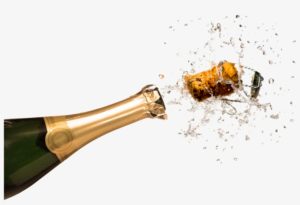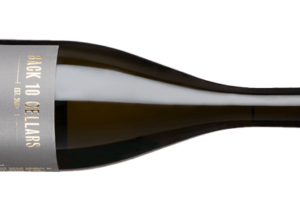
Ever feel like Champagne hits you a little harder than a regular glass of wine?
It’s because it actually does. That sparkling buzz is a real thing. The Germans even have a word for it: “Sektlaune,” meaning “Champagne flush. A sparkling mood, adventurous mood, tending to become involved in risky activities.” It’s probably meant as a warning in Deutschland: “Beware the inhibition-removing powers of bubbly!”
For even though the typical alcohol level in a bottle of sparkling wine (11-12%) is lower than still wine, those carbon dioxide bubbles are like little ninjas attacking your sobriety. As Business Insider notes, this is because the CO2 “in sparkling drinks increases the permeability of your biomembranes, letting more alcohol into your bloodstream.” To the point: alcohol is absorbed quicker, hence the quick buzz that most of us experience.
Another issue with bubbly—whether, it’s French Champagne or Crémant, Italian Prosecco, Spanish Cava or whatever—is that, as a typically welcoming, celebratory aperitif, it tends to be drunk on an empty stomach, and often consumed more quickly than, say, your casual glass of Pinot Grigio or Chardonnay. Which makes it doubly dangerous.
And, of course, it’s exponentially more popular this time of year! While all sparkling wine producers have been trying to remind North Americans that bubbly is not just for special occasions, a whopping 1/3rd of the LCBO’s annual sparkling wine sales take place from mid-November to December 31. Last year, that holiday period represented $34 million in gross bubbly income. (Incidentally, the LCBO registers an astounding $37 million in sales of all products on New Year’s Eve alone!)
But while it’s always fun to share the dramatic unsealing of a bottle of sparkling wine with your guests, never treat the popping of a cork lightly. The pressure inside a bottle of Champagne can reach 90 pounds per square inch—that’s two to three times more air pressure than in your average car tire. This kind of bottled-up energy can launch a champagne cork at about 80 km/hr—fast enough to shatter glass, much less cause permanent eye damage. So remember that all that foil packaging and wire mesh aren’t just there for show, and please wrap a towel overtop the cork as you gently twist it off the bottle. You’ll still hear that distinct pop, minus the risk of denting your ceiling or taking out an eye.
As far as the glass itself goes, if it’s a budget bubbly, a Champagne flute will probably do just fine—as it’s probably more about the celebration than the quality of a particular vintage. But if someone has taken the time and expense to purchase a decent bottle, take note and reach for a white wine glass. It’ll give you the chance to actually enjoy the nuances of the wine’s aromas—it is wine, after all—as opposed to your nostrils merely being consumed by rising bubbles from a flute.
Regardless of the type of vessel you select, it’s actually best not to have them dishwasher-washed, as bubbles need something to cling to in order to form inside the glass. So if you have a soapy lining, well, you’re not going to see that dramatic line of bubbles forming inside the glass. In fact, some restaurants will actually slightly scratch the inside of Champagne glass to ensure that that mesmerizing trail forms from at least one spot in the glass every time. Remember, as Veronique Greenwood writes on BBC.com, “Strictly speaking, there aren’t actually bubbles in the wine until you open it, reducing the pressure and allowing the gas molecules to come together suddenly out of solution. More bubbles form as the Champagne makes contact with imperfections and speckles of dust on the interior of a Champagne glass.”
So here’s a toast to a safe and happy holiday!
And when someone tells you that Champagne goes straight to their head, you can now explain why.




Leave a Reply
Your email is safe with us.